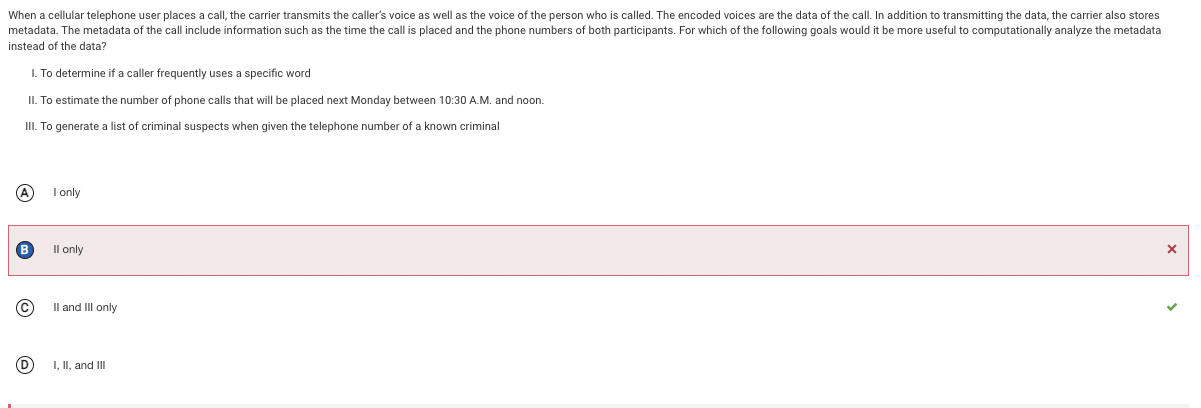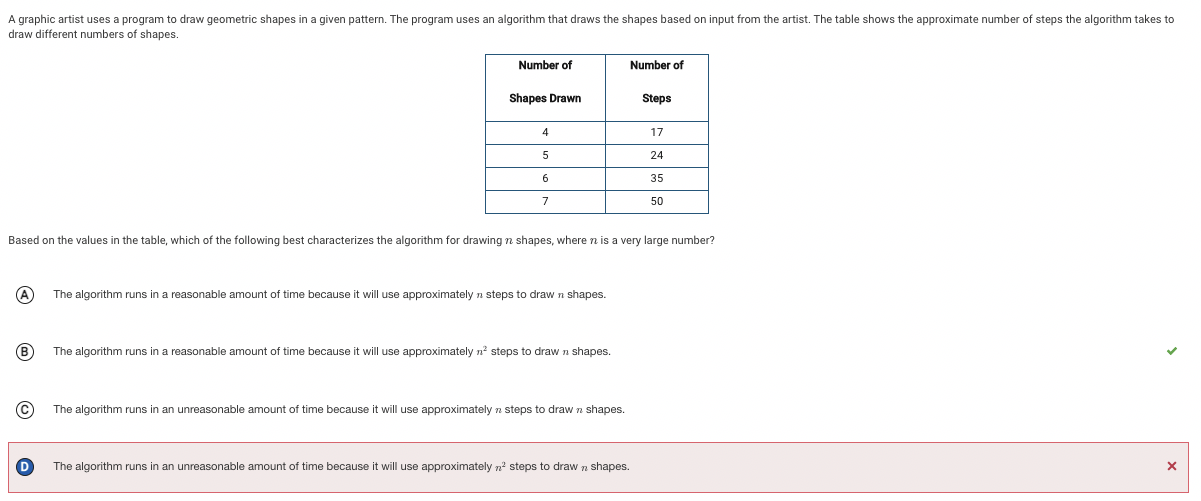MCQ Test 4 Corrections
Final Score 43/50
Q6:

Correction: Answer is A because - When data is sent over the internet, it is broken up into small pieces called packets. Each packet contains a part of the original data, along with some information about where it should be sent and how it should be reassembled. This information is called metadata. The packets are then sent separately over the internet and reassembled at the destination to recreate the original data.
Q20:

Correction: Answer is C because - Metadata is information about data. In the case of a phone call, the data is the voice of the callers and the metadata is information about the call, such as the time it was placed and the phone numbers of the participants. Analyzing the metadata can be more useful for certain goals, such as estimating the number of calls that will be made during a specific time period or generating a list of criminal suspects based on their phone numbers. Analyzing the voice data would not help with these tasks.
Q37:

Correction: Answer is B because - The table shows the number of steps an algorithm takes to draw a certain number of shapes. As the number of shapes increases, the number of steps required also increases. Based on this trend, the algorithm for drawing a very large number of shapes will require an unreasonable amount of time, and it will use approximately n^2 steps to draw n shapes.
Q41:

Correction: Answer is C because - The student is writing a program that replaces each negative value in a particular column of a spreadsheet with the value 0. They need a procedure that will help them find the first negative value in the column. The procedure findNegative returns the row number of the first negative value that appears in the column or -1 if there are no negative values.
Q42:

Correction: Answer is B because - The question is asking which procedure would be most useful in a program that searches for a particular word in two different text files. Option B, “isFound,” is the most useful because it takes a word and a text file as input and returns true if the word appears in the text file. In other words, it helps determine whether the word is present in a specific text file, which is what the program needs to do in order to compare two different text files.
Q48:

Correction: Answer is A because - The binary search algorithm works by dividing a sorted list in half repeatedly until the target value is found. Therefore, the maximum number of elements that need to be examined in a binary search is logarithmic, with a base of 2. Since the base-2 logarithm of 700 is close to the base-2 logarithm of 900, the answer is A, the value of x is approximately equal to the value of y.
Q49:

Correction: Answer is A because - The question is asking which code segment will set a variable called ‘found’ to true if at least one student scored the maximum possible number of points on a quiz, and false otherwise. Option C is the correct answer because it initializes the variable ‘found’ to false and uses a repeat loop to go through each score in the list, comparing it to the maximum score. If the score matches the maximum score, it sets ‘found’ to true and exits the loop.